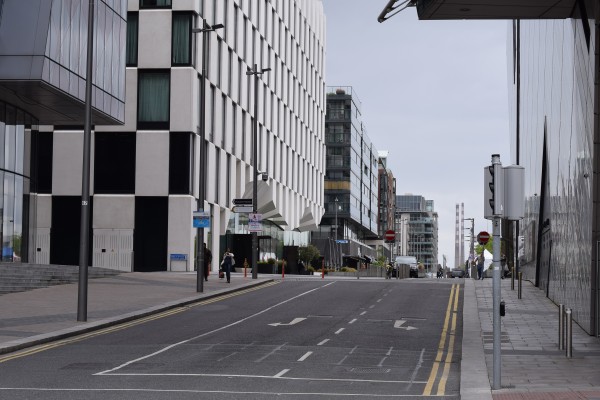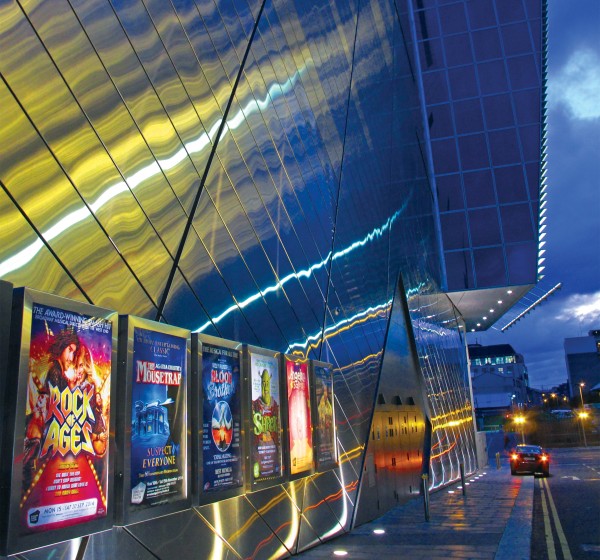
Pictured Above: Misery hill.
Traces of a bleaker past and glimpses of intriguing eras can be discerned in the street names of the Dublin Docklands area, now commonly referred to as the Silicon Docks.
The irony or mirth of a street named Misery Hill adjacent to Facebook headquarters cannot be lost on some of us ruminative types as we pass between elegant buildings of angled glass and steel whose shadows fall on the mud of history.
The Dublin Docklands, being one of the closest parts of the city to the sea, have embedded tales of mystery and intrigue woven into them, such is the nature of ports that welcome or wave farewell to travellers seeking or fleeing variations of extreme destinies.
The newly tarmacadamed roads and stylish cobbled streets cover the layers of international tales and the groans of the unfortunates who found a certain destiny here.
Before the River Liffey was contained, the tidal waters came up to the Townsend Street and College Green areas. Pilgrim ships destined for Santiago de Compostela apparently berthed alongside a Leper’s Hospital, then sailed directly to the coast of Galicia. By the mid-13th century, some of these ships were carrying people with leprosy who were desperate for a miraculous cure, hoping to cure their suffering.
Historian Turtle Bunbury reports that Misery Hill was the last refuge for those Lazar Hill pilgrims with leprosy who could not afford to stay in a hospice. It apparently derives its name from an age when the corpses of those executed at Gallows Hill near Upper Baggot Street were carted here and strung up to rot as a warning to other would-be troublemakers.

Pictured Above: Grand Canal Theatre.
The area’s names also reveal the layers of the past. Street names such as Horse Fair (from the 18th century) and Blood Stoney Road – named for the celebrated engineering genius, Bindon Blood Stoney, who rebuilt Sir John Rogerson’s Quay in the 1880s are some examples that Bunbury quotes.
There were notorious characters who met their start or end here in Dublin 4. None more intriguing than Edward Tyrell the priest hunter. “He was hired as priest hunter by Joshua Dawson,” says Bunbury.
Dawson, who gives his name to Dawson Street, which he commissioned, was Secretary to the Lords Justices in 1705. Priests who did not sign up to the Act of Abjuration, renouncing James III’s claim to the throne had to go on the run.
“Tyrell was hired as a spy by Dawson to try and catch these priests. Tyrell met his own grisly demise, however, being hanged on Gallows Hill, near Baggot Steet, for the crime of bigamy,” informs Bunbury. He would be then carted to Misery Hill to be strung up. According to Bunbury, two of Robert Emmet’s accomplices were also allegedly hanged there in 1803.
Between the lepers of the 13th century and the hangings and display of bodies in the 18th century, the Misery Hill name seems to capture the consistency of macabre unfoldings through time. Perhaps Facebook has found a good home after all!
By Ferg Hayden



